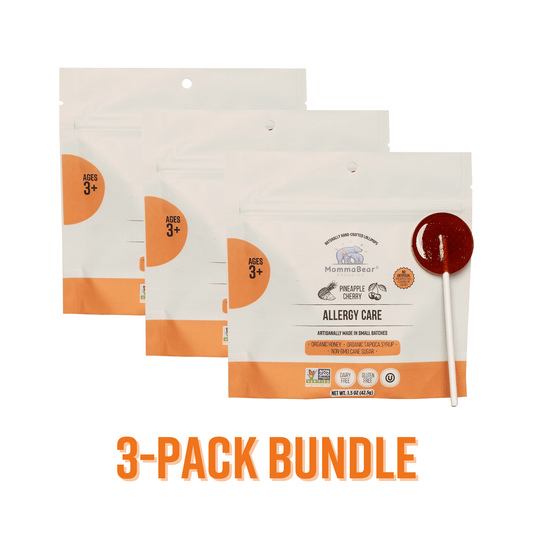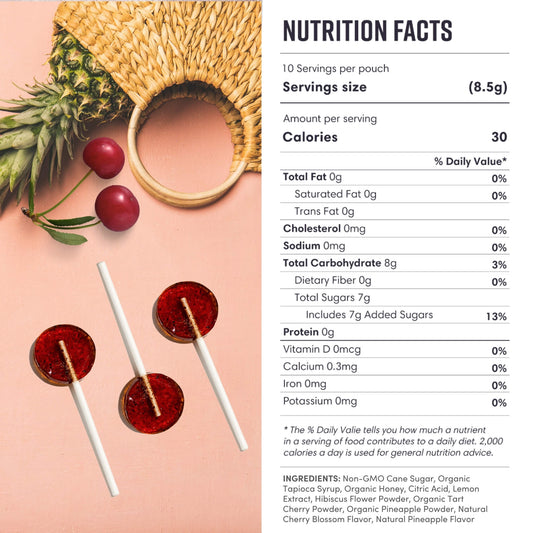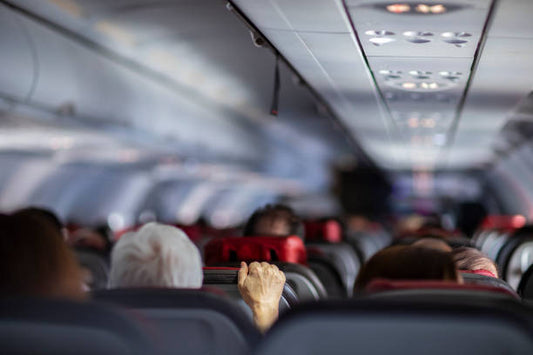Understanding Motion Sickness
What is Motion Sickness?
Motion sickness is a familiar condition that many people experience when their senses send mixed signals to the brain about movement. It often happens during travel by car, plane, or boat and can impact individuals of all ages. When our bodies detect movement through various senses—especially the inner ear, eyes, and other parts—the brain can get a bit bewildered when these signals don’t quite match up.
When our eyes tell us we're still while our inner ear feels the movement—like when we're on a car ride—it can create a confusing clash of sensations that sometimes causes motion sickness. Although it’s not a dangerous condition, it can really take the fun out of traveling and may even deter people from enjoying certain modes of transport altogether because they're worried about feeling unwell. This means they might miss out on wonderful travel experiences and adventures, which can be quite a disappointment for any travel enthusiast.
Causes of Motion Sickness
The causes of motion sickness are multifaceted but primarily stem from the vestibular system, which is responsible for balance and spatial orientation. Situations that trigger this response may include:
-
Traveling by car, plane, or boat.
-
Prolonged exposure to visual stimuli like reading in a moving vehicle.
-
Sudden movements or changes in direction, such as roller coasters or virtual reality experiences.
Everyone experiences motion sickness differently, and this can be influenced by a few factors like our genetics, age, and even hormonal changes. For example, children tend to be more susceptible to motion sickness because their vestibular systems are still developing. On the other hand, many adults notice that this sensitivity lessens as they get older. It's also important to consider that certain medical conditions, like migraines or inner ear issues, can make motion sickness more likely, so it's a good idea for everyone to be mindful of their own unique risk factors.
Symptoms of Motion Sickness
Symptoms of motion sickness can vary from mild discomfort to severe incapacitation. Common symptoms include:
-
Nausea and vomiting
-
Dizziness or lightheadedness
-
Cold sweats
-
Headache
-
Pale skin
Many people find that these symptoms settle down pretty quickly once the motion comes to an end. However, some may continue to feel a bit uneasy even after arriving at their destination. This feeling of discomfort post-motion can sometimes spark anxiety about traveling again, creating a loop of worry that makes future trips feel more daunting. It's also important to consider the mental side of motion sickness; just thinking about possible symptoms can raise anxiety levels, which may, in turn, make the physical symptoms feel even worse. By recognizing this connection, travelers can take steps to better manage their symptoms and enjoy their journeys more comfortably.
Non-Drowsy vs Drowsy Medications
The Difference Between Non-Drowsy and Drowsy Medications
When it comes to treating motion sickness, medications can generally be categorized as either non-drowsy or drowsy. Drowsy medications, such as dimenhydrinate and diphenhydramine, typically have sedative effects due to their antihistaminic properties. While they may effectively alleviate symptoms of motion sickness, they often induce sleepiness, which can be counterproductive when traveling. This sedative effect is particularly pronounced in individuals who may already be predisposed to fatigue, making it essential for travelers to consider their itinerary before choosing a medication.
On the other hand, non-drowsy medications are thoughtfully crafted to soothe your symptoms without making you feel sleepy, making them a favorite choice for those who want to stay alert. These alternatives are especially helpful for anyone involved in activities like driving or handling tasks that demand focus and attention. Many non-drowsy options feature ingredients such as meclizine or ginger, which function differently than typical antihistamines. They target the vestibular system to help prevent nausea and dizziness, all while avoiding the drowsiness that can sometimes come with sedation.
Why Choose Non-Drowsy Medications?
Choosing non-drowsy medications for motion sickness relief provides several key advantages:
-
Improved functionality: Users can maintain energy levels and attention during travel or other activities.
-
Better compliance: Individuals are more likely to adhere to treatment without the concern of feeling excessively tired.
-
Versatile use: Non-drowsy medications can be taken before travel and during activities, offering flexibility in usage.
These days, non-drowsy options are increasingly popular, especially for those who want to enjoy their travels without the sleepy side effects of medication. Plus, non-drowsy medications come in a variety of forms—like tablets, chewables, and even patches—making it easier for everyone to find what works best for them. This wonderful variety truly enhances the user experience by providing greater convenience and helping people stick to their treatment plans. On top of that, the growing interest in natural remedies, such as acupressure bands and herbal supplements, has made non-drowsy solutions even more appealing, giving individuals plenty of effective choices to tackle motion sickness with confidence.
Types of Non-Drowsy Medications for Motion Sickness
Over-the-Counter Medications
Several over-the-counter (OTC) non-drowsy medications are available for motion sickness relief. The most prominent include:
-
Meclizine: Often recommended for its effectiveness against nausea and vomiting associated with motion sickness, meclizine is a common OTC choice.
-
Ginger: Widely recognized for its nausea-relieving properties, ginger can be consumed in various forms, including capsules, tea, and candy.
-
Dimenhydrinate (in formulations marketed as non-drowsy): While typically drowsy, some formulations claim non-drowsy effects by lowering the dosage.
These medications can offer quick relief and are usually safe for most travelers. Many people find that taking them about an hour before traveling helps them work their best, making for a more enjoyable journey. Additionally, some individuals lean towards natural remedies; for example, acupressure bands are becoming more popular as they apply gentle pressure to specific points on the wrist to help ease nausea without the side effects linked to traditional medications.
Prescription Medications
For individuals who experience severe motion sickness or find OTC options ineffective, prescription medications may be considered. Common prescription options include:
-
Scopolamine: Available as a patch, this medication is placed behind the ear and provides continuous release of medication to prevent nausea.
-
Stemetil: This medication is indicated for severe nausea and can be prescribed for motion sickness treatment.
Consultation with a healthcare provider is advised to determine the most suitable option based on individual symptom severity and overall medical history. In some cases, healthcare providers may also recommend a combination of therapies, such as using a scopolamine patch along with oral medications, to enhance effectiveness. Furthermore, understanding the triggers of motion sickness—be it a specific mode of transportation or environmental factors—can help in tailoring a more personalized treatment plan. Keeping a travel diary to note when symptoms occur can also aid in identifying patterns and improving management strategies.
How Non-Drowsy Medications Work
The Science Behind Non-Drowsy Medications
Non-drowsy medications primarily target the brain, especially the vestibular and vomiting centers. For example, meclizine works by blocking histamine receptors that contribute to motion sickness. By dampening the signals that trigger nausea and dizziness, individuals can enjoy smoother travel experiences. This mechanism is particularly beneficial for those who frequently travel by car, plane, or boat, as it allows them to engage in their journeys without the debilitating effects of motion sickness.
Products containing ginger may function by promoting gastric motility and decreasing the likelihood of irritation in the gastrointestinal tract, thus preventing nausea. Ginger has been used for centuries in traditional medicine, and its natural properties make it a popular choice for those seeking relief without the sedative effects associated with many over-the-counter remedies. The active compounds in ginger, such as gingerol and shogaol, are believed to interact with the digestive system, further enhancing its effectiveness in combating nausea.
Effectiveness of Non-Drowsy Medications
Research has demonstrated the effectiveness of non-drowsy medications in managing motion sickness. For instance, meclizine has been found to be highly effective in various studies, helping to reduce the occurrence and severity of symptoms during travel. Clinical trials have shown that individuals taking meclizine report significantly less dizziness and nausea compared to those taking a placebo, underscoring the importance of this medication for those prone to motion sickness.
Similarly, ginger is supported by research that indicates its efficacy in alleviating nausea, particularly in pregnant women and individuals undergoing certain medical treatments. Studies have shown that ginger can be as effective as some prescription medications for nausea, making it a valuable alternative for those who prefer natural remedies. However, individual responses may vary, so it is crucial for users to assess their effectiveness personally. Factors such as dosage, form of ginger (fresh, powdered, or extract), and the timing of intake can all influence how well ginger works for nausea relief. This variability highlights the importance of personalized approaches to managing symptoms, encouraging individuals to experiment with different options to find what works best for them.
Potential Side Effects of Non-Drowsy Medications
Common Side Effects
While non-drowsy medications are generally well-tolerated, some individuals may experience side effects. Common side effects include:
-
Dry mouth
-
Headaches
-
Fatigue (in some cases)
These side effects tend to be mild but should be monitored, especially during initial use. For instance, dry mouth can be particularly uncomfortable and may lead to difficulties in swallowing or speaking. Staying hydrated and using sugar-free lozenges can help alleviate this symptom. Additionally, headaches may arise due to various factors, including dehydration or tension, which can be managed with over-the-counter pain relief or relaxation techniques.
Serious Side Effects
Although rare, serious side effects can occur. It's important to be aware of the following:
-
Allergic reactions: Symptoms may include rash, itching, or swelling.
-
Severe dizziness or confusion: This may indicate a more significant reaction to the medication.
If any serious side effects are experienced, it is paramount to discontinue use and consult with a healthcare professional promptly. In some cases, allergic reactions can escalate quickly, leading to anaphylaxis, which requires immediate medical attention. It’s advisable to familiarize oneself with the signs of a severe allergic reaction, such as difficulty breathing or swelling of the face and throat. Furthermore, severe dizziness or confusion can impact daily activities and may require adjustments in dosage or a change in medication altogether. Always keep an open line of communication with your healthcare provider regarding any unexpected symptoms you may encounter during treatment.
A Sweet Solution for Motion Sickness
Navigating motion sickness can feel challenging, but with the right information and some non-drowsy medication options, many people can find relief from their symptoms. By understanding motion sickness, including its causes, symptoms, and treatment choices, travelers are empowered to make informed decisions that enhance their journeys. Non-drowsy medications, whether available over-the-counter or by prescription, offer effective alternatives for those eager to enjoy their travels without feeling sleepy. And for a sweet twist, Momma Bear Organics nausea lollipops can be a delightful way to help ease symptoms! Remember, it’s always a good idea to consult with a healthcare provider to ensure you’re taking the best steps to manage motion sickness effectively.










